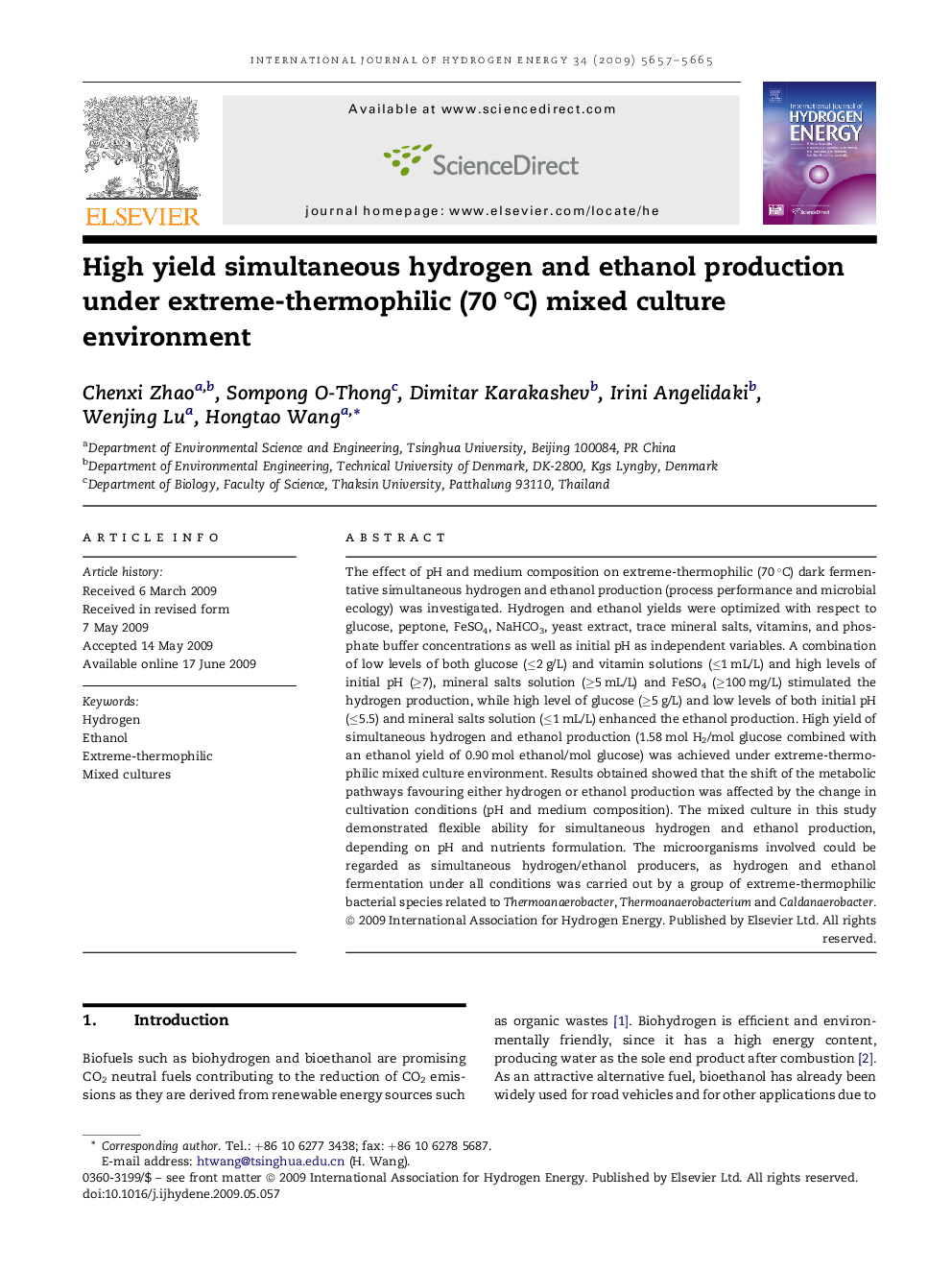| Article ID | Journal | Published Year | Pages | File Type |
|---|---|---|---|---|
| 1273692 | International Journal of Hydrogen Energy | 2009 | 9 Pages |
The effect of pH and medium composition on extreme-thermophilic (70 °C) dark fermentative simultaneous hydrogen and ethanol production (process performance and microbial ecology) was investigated. Hydrogen and ethanol yields were optimized with respect to glucose, peptone, FeSO4, NaHCO3, yeast extract, trace mineral salts, vitamins, and phosphate buffer concentrations as well as initial pH as independent variables. A combination of low levels of both glucose (≤2 g/L) and vitamin solutions (≤1 mL/L) and high levels of initial pH (≥7), mineral salts solution (≥5 mL/L) and FeSO4 (≥100 mg/L) stimulated the hydrogen production, while high level of glucose (≥5 g/L) and low levels of both initial pH (≤5.5) and mineral salts solution (≤1 mL/L) enhanced the ethanol production. High yield of simultaneous hydrogen and ethanol production (1.58 mol H2/mol glucose combined with an ethanol yield of 0.90 mol ethanol/mol glucose) was achieved under extreme-thermophilic mixed culture environment. Results obtained showed that the shift of the metabolic pathways favouring either hydrogen or ethanol production was affected by the change in cultivation conditions (pH and medium composition). The mixed culture in this study demonstrated flexible ability for simultaneous hydrogen and ethanol production, depending on pH and nutrients formulation. The microorganisms involved could be regarded as simultaneous hydrogen/ethanol producers, as hydrogen and ethanol fermentation under all conditions was carried out by a group of extreme-thermophilic bacterial species related to Thermoanaerobacter, Thermoanaerobacterium and Caldanaerobacter.
